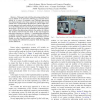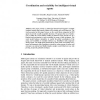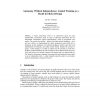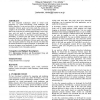202 search results - page 22 / 41 » Modeling collision avoidance behavior for virtual humans |
ICRA
2009
IEEE
14 years 2 months ago
2009
IEEE
— This paper deals with the platooning problem that can be defined as the automatic following of a manned driven vehicle by a convoy of automatic ones. Different approaches have...
KI
2009
Springer
14 years 2 months ago
2009
Springer
To be sociable, embodied interactive agents like virtual characters or humanoid robots need to be able to engage in mutual coordination of behaviors, beliefs, and relationships wit...
ATAL
2007
Springer
14 years 1 months ago
2007
Springer
This paper presents a multi-agent framework designed to simulate synthetic humans that properly balance task oriented and social behaviors. The work presented in this paper focuses...
WRAC
2005
Springer
14 years 1 months ago
2005
Springer
A classic autonomous robot is an autonomous agent for open, unpredictable environments. Such an agent is inherently autonomous but not independent. Independence implies unpredictab...
VRST
2004
ACM
14 years 1 months ago
2004
ACM
We have integrated technologies related to virtual social interaction, e.g. virtual environments, visual simulations, and lifelike characters. In our previous efforts to integrate...




